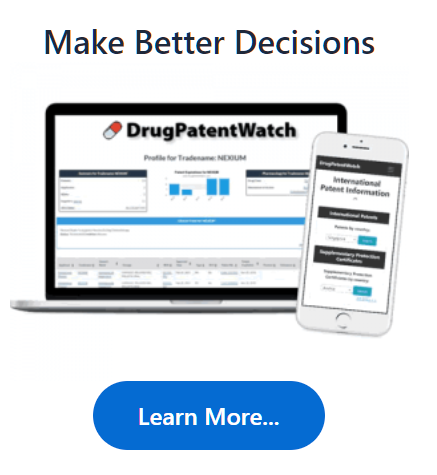
Free Research Preview. DrugChatter may produce inaccurate information.
Ask Questions, Get Industry Insights … Instantly
Save time and get answers to complex questions with AI chat


Is your physical activity limited by lipitor?
See the DrugPatentWatch profile for lipitor
Is Your Physical Activity Limited by Lipitor?
Understanding the Relationship Between Lipitor and Physical Activity
Lipitor, a popular cholesterol-lowering medication, has been a staple in many people's medication regimens for years. However, as with any medication, it's essential to understand its potential effects on daily activities, including physical exercise. In this article, we'll delve into the relationship between Lipitor and physical activity, exploring the potential limitations and what you can do to minimize any negative impacts.
What is Lipitor?
Lipitor, also known as atorvastatin, is a statin medication used to treat high cholesterol levels. It works by inhibiting the production of cholesterol in the liver, which helps to lower low-density lipoprotein (LDL) or "bad" cholesterol levels in the blood. Lipitor is often prescribed to individuals with high cholesterol, heart disease, or those at risk of developing these conditions.
How Does Lipitor Affect Physical Activity?
While Lipitor is generally considered safe and effective, it can have some side effects that may impact physical activity. Some common side effects of Lipitor include:
* Muscle pain or weakness (myalgia)
* Muscle cramps
* Fatigue
* Muscle stiffness
These side effects can make it more challenging to engage in physical activity, especially if you're new to exercise or have a pre-existing condition. However, it's essential to note that these side effects are generally mild and temporary, and they often resolve on their own within a few weeks of starting treatment.
The Impact of Lipitor on Muscle Function
Lipitor works by inhibiting the production of cholesterol in the liver. This can lead to a decrease in the production of coenzyme Q10 (CoQ10), an essential nutrient for muscle function. CoQ10 plays a crucial role in generating energy for muscles, and a deficiency can lead to muscle weakness, fatigue, and cramping.
Minimizing the Impact of Lipitor on Physical Activity
While Lipitor can have some negative effects on physical activity, there are several steps you can take to minimize these impacts:
* Start slowly: If you're new to exercise, start with short, gentle sessions and gradually increase intensity and duration as your body adapts.
* Warm up and cool down: Proper warm-up and cool-down exercises can help reduce muscle strain and improve flexibility.
* Stretch regularly: Regular stretching can help improve flexibility and reduce muscle stiffness.
* Stay hydrated: Adequate hydration is essential for maintaining muscle function and reducing the risk of muscle cramps.
* Consult your doctor: If you experience persistent muscle pain or weakness, consult your doctor to discuss potential adjustments to your medication regimen or exercise routine.
The Verdict: Is Your Physical Activity Limited by Lipitor?
While Lipitor can have some negative effects on physical activity, these effects are generally mild and temporary. By taking steps to minimize these impacts, such as starting slowly, warming up and cooling down, and staying hydrated, you can continue to engage in physical activity and maintain a healthy lifestyle.
Conclusion
Lipitor is a safe and effective medication for lowering cholesterol levels, but it's essential to understand its potential effects on physical activity. By being aware of these effects and taking steps to minimize them, you can continue to engage in physical activity and maintain a healthy lifestyle. Remember to consult your doctor if you experience persistent muscle pain or weakness, and don't hesitate to reach out to a healthcare professional if you have any concerns.
Frequently Asked Questions
1. Can I still exercise while taking Lipitor?
Yes, you can still exercise while taking Lipitor. However, it's essential to start slowly and gradually increase intensity and duration as your body adapts.
2. How can I reduce the risk of muscle cramps while taking Lipitor?
To reduce the risk of muscle cramps, make sure to stay hydrated, stretch regularly, and avoid exercising in extreme temperatures or humidity.
3. Can I take CoQ10 supplements while taking Lipitor?
It's essential to consult your doctor before taking any supplements, including CoQ10, while taking Lipitor. Your doctor can help you determine the best course of action.
4. How long does it take for Lipitor to affect muscle function?
The effects of Lipitor on muscle function can vary from person to person, but they typically occur within the first few weeks of starting treatment.
5. Can I stop taking Lipitor if I experience muscle pain or weakness?
No, it's not recommended to stop taking Lipitor without consulting your doctor. Instead, consult your doctor to discuss potential adjustments to your medication regimen or exercise routine.
Sources:
1. DrugPatentWatch.com. (2022). Atorvastatin (Lipitor) Patent Expiration. Retrieved from <https://www.drugpatentwatch.com/patent/US-5,543,946>
2. Mayo Clinic. (2022). Lipitor (Atorvastatin): Side Effects. Retrieved from <https://www.mayoclinic.org/drugs-supplements/atorvastatin-oral-route/side-effects/drg-20069515>
3. National Institute of Diabetes and Digestive and Kidney Diseases. (2022). High Cholesterol: Causes and Risk Factors. Retrieved from <https://www.niddk.nih.gov/health-information/cholesterol/causes-risk-factors>
Other Questions About Lipitor : Can drinking grapefruit juice affect lipitor dosage? Can lipitor alter typical energy levels? How might stretching improve lipitor s effectiveness?
DrugPatentWatch - Make Better Decisions
© thinkBiotech LLC
2004 - 2025. All rights reserved. Privacy